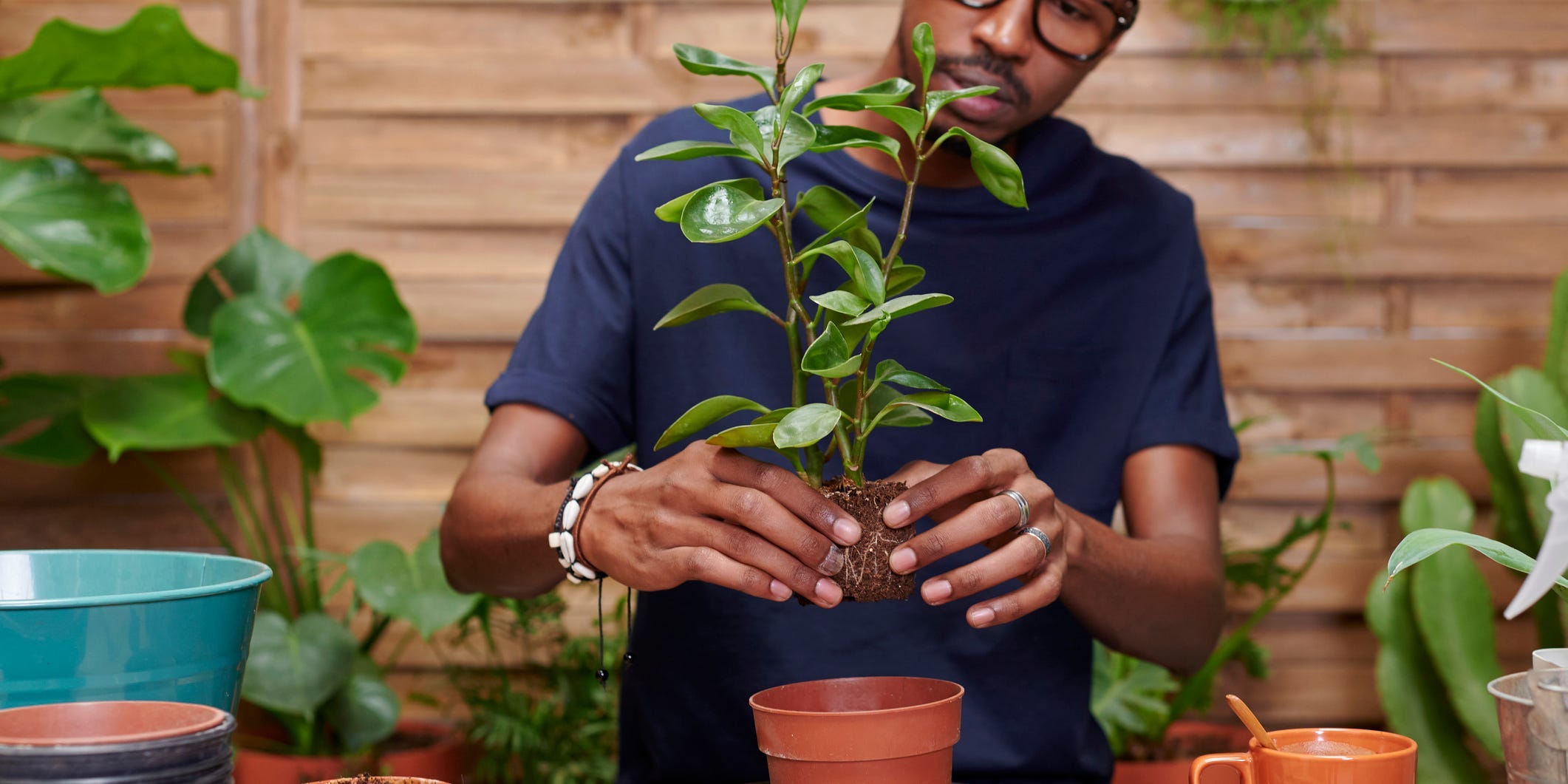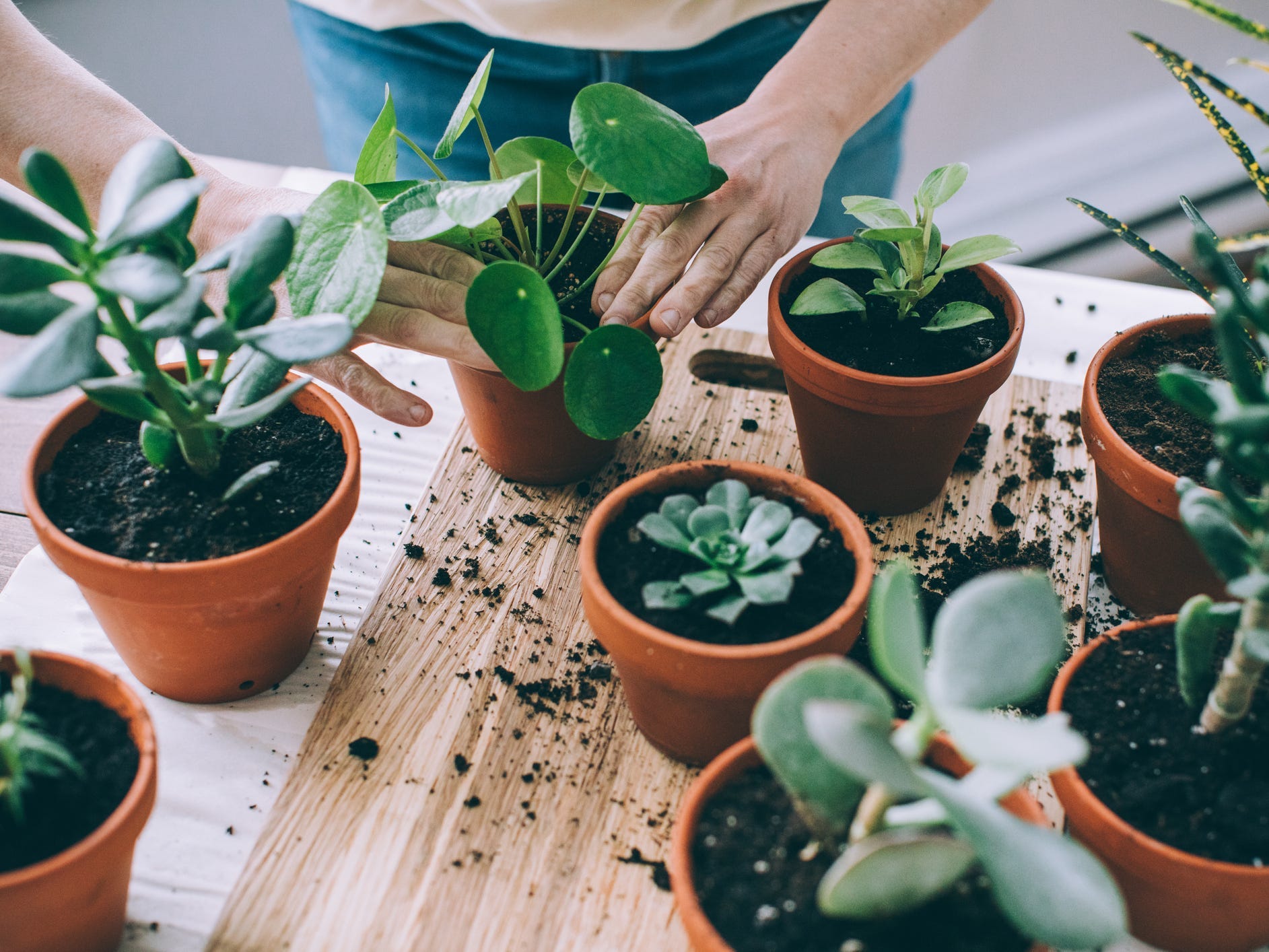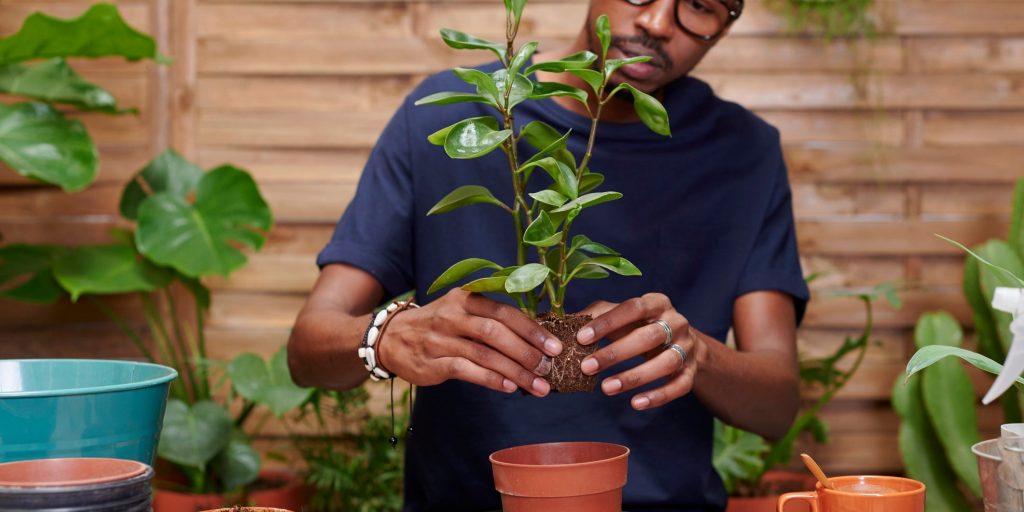
Westend61/Getty Images
- Most houseplants need to be repotted once every year or two.
- There are obvious signs when it's time to repot, like roots growing out of the bottom of the pot.
- Choose a pot that's 1 to 2 inches larger than the one the plant has outgrown.
- Visit Insider's Home & Kitchen Reference library for more stories.
Repotting plants can be a delicate yet messy process, but it is an essential part of being a great plant parent. Most houseplants require repotting once every year or two, although this could depend on the type of plant and conditions it lives in.
Kierslyn Kujawa, plant expert and founder of Planted in Pots, shares her best tips and tricks on how to best repot your plant and give it the care it deserves to keep growing and thriving.
Signs it's time to repot
When a plant has grown too big for its current pot, it's time to transfer it to a larger one to give it more space to thrive. Repotting can be a stressful activity for your houseplant, which is why repotting is only recommended once every year or so.
Thankfully, houseplants are particularly good at showing you when they need extra attention. Kujawa says the telltale signs of the need for repotting can include:
- Roots growing out of the bottom of the pot
- Roots growing out of the top layer of soil
- Plant needing to be watered more frequently than normal
- It has been a year or two since repotting
- Insects in the soil
- Leaves dying and/or becoming smaller than before
Choosing the right pot and soil

MmeEmil/Getty Images
Repotting houseplants is not a one-size-fits-all process because different plants require different soil types. To choose the right soil, Kujawa suggests looking at all of its environmental factors: dryness or humidity of the climate, light exposure, and watering frequency.
"If you have a tropical plant, you may need soil that will retain moisture," says Kujawa. "If your plant likes to dry out between waterings, you'll want a fast-draining soil like a succulent mix."
As a general rule, plant roots need good airflow, nutrients, and drainage. While there are two options for soil - homemade or store-bought - there are things to know for each. With store-bought or premade potting soil, Kujawa recommends an all-purpose mix with perlite, a chunky element like bark, and nutrient-rich soil. With homemade potting soil, Kujawa recommends mixing an all-purpose potting mix, perlite, orchid bark, charcoal, and worm castings.
To choose the perfect pot - one that is one or two inches larger than the one the plant is already in - Kujawa always recommends a pot with a drainage hole, and if your watering habits are particularly erratic, a terra cotta pot is the way to go for its ability to wick away excess moisture.
"If you want a fancy indoor pot, choose a plastic/nursery pot that fits inside of the fancy pot, so it can still be watered and drained through," says Kujawa.
Insider's takeaway
With just a little patience, a few tools, fresh potting mix, and a new pot, repotting your plant can be a great way to not just care for, but connect with your plants. This necessary process will give your houseplants the room and nutrients they need and reward you with new growth for years to come.
